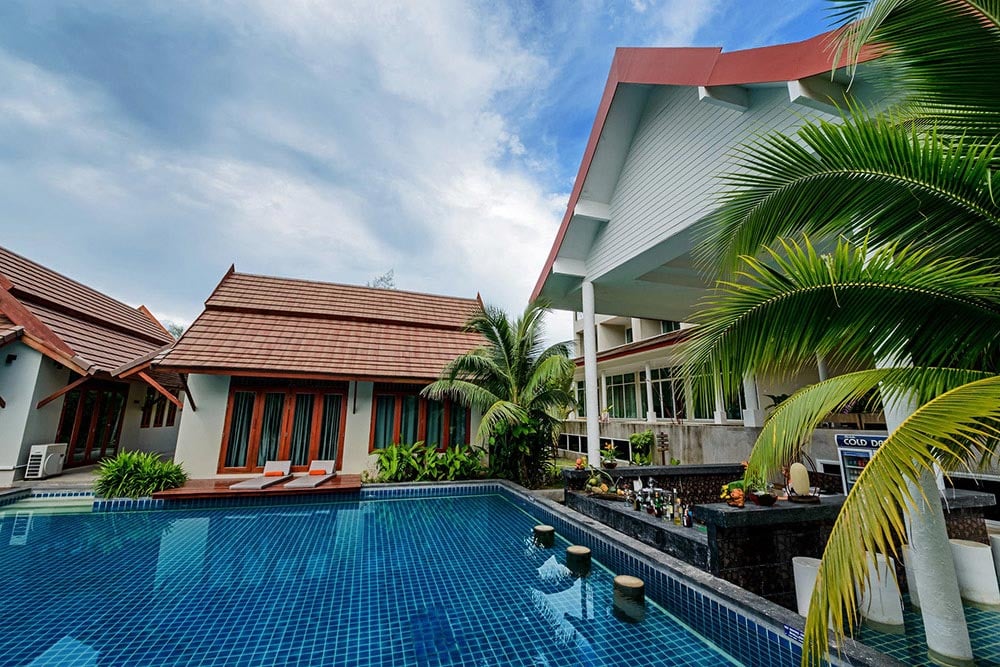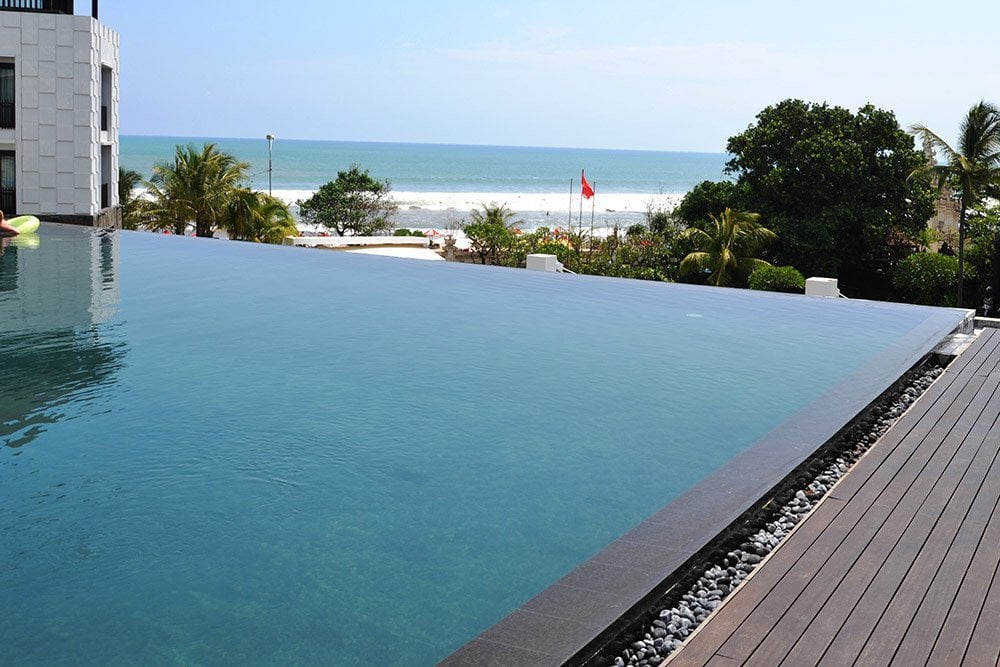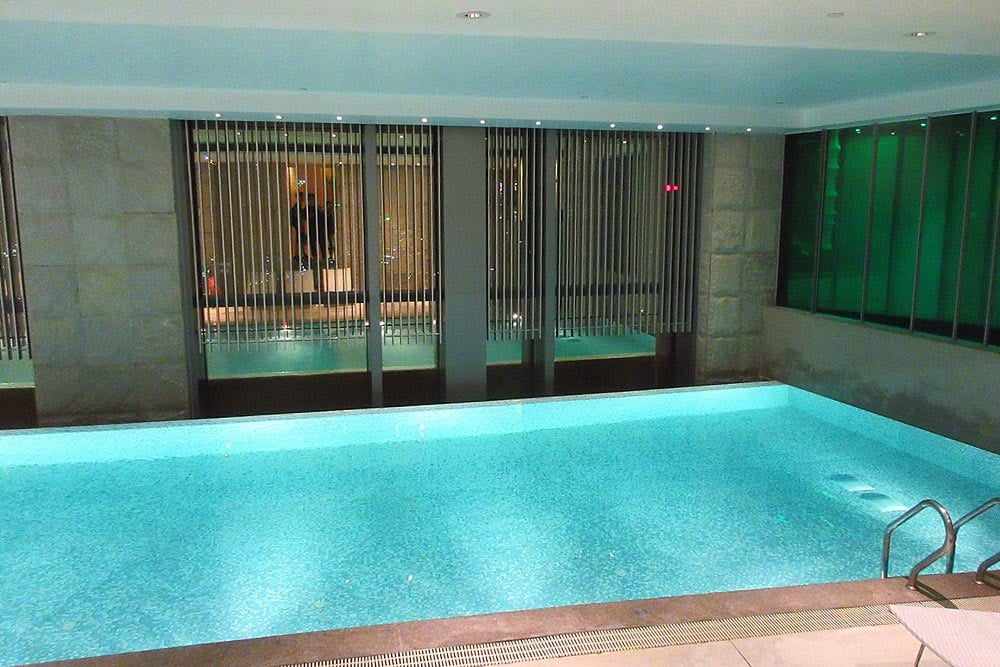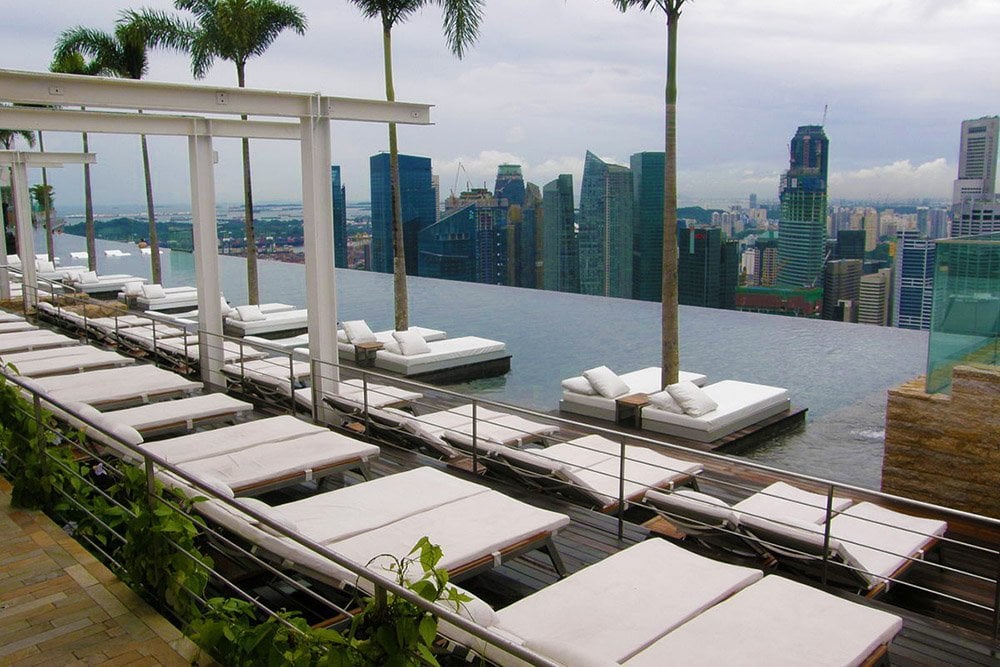 A pool surrounded by Villas
A pool surrounded by VillasA swimming pool in the estate has always been many people's ideal dream, taking a dip or swim whenever they want. However, choosing a pool best fitting one's style, usage, and budget may be easier said than done. For the better or worse, pools nowadays come in various types, styling, size, and budget. Material availability and estate land space are two other factors thrown in. Henceforth, in this article, we have compiled a list and facts of the various pool types, saving you many headaches in your pool planning journey.
Before that, let's cover one primary consideration first, and that is pool drainage. Good drainage is vital in ensuring water spillovers drain from the deck surface quickly and fewer chances of people slipping. It also helps with clearing out any pesky floating leave or dirt from the pool water surface.
Overflow & Skimmer
Overflow pools have the water level that is flush or slightly below the deck edge, with an overflow channel along the pool border. The channel catches water spillages/overflows and directs it to a below pool balance tank for filtration. Like any other channel that drains the water, overflow channels have a cover above with a grate, stone pebbles, or tiles depending on the drainage need and overall pool design. While being more expensive and a bigger space requirement, due to the tank, than skimmers, it is a more preferred choice for a more seamless pool to deck surface look.
 An infinity pool with a pebble covered overflow channel
An infinity pool with a pebble covered overflow channelAs for skimmer pools, the pool water usually reaches about 4 inches short of the deck edge, forming a gap. A skimmer is built into the pool wall, right under the deck edge and reaches slightly below the water level. The skimmers would pull in the topmost water alongside any floating debris into a filtration system. Due to its placement style, skimmers fit a more hidden drainage aesthetic. Options are available to extend the deck edge to conceal the skimmer when viewed from the pool deck, or using a narrow and longer skimmer.
On that note, let's explore the various pool types that await.
Above-Ground Pool
 An above-ground pool with a raised pool deck around it
An above-ground pool with a raised pool deck around itFor budget-savvy pool projects, this may be a good option. Above-ground pools are one of the cheapest pool types out in the market, catered to those who want a reasonable pool on a budget. While aesthetically, it may not look as pleasing as the other types, above ground pools can be tweaked to resemble an in-ground pool effect with some raised decking designs around the swimming pool. What's more, this pool type offers greater adaptability to various landscape terrains and portability, a pool that can move into any new house alongside you with ease.
Indoor Pool
 An indoor pool in Hotel Okura Macau
An indoor pool in Hotel Okura MacauAs the name is pretty much self-explanatory, indoor pools are pools placed within a wall & roof sealed space on the estate. Most indoor pools are usually geometrically shaped, but other organic forms are also available. While this type may be suitable for places with long cold seasons, it would be inadvisable for regions with recurring hot and cold climates. That is unless turning your indoor pool into a makeshift sweat pool is your thing.
Infinity Pool
 The famous Marina Bay Sands SkyPark Infinity Pool, overlooking Singapore's city skyline
The famous Marina Bay Sands SkyPark Infinity Pool, overlooking Singapore's city skylineBeing a popular pool type in premium residences and estates, infinity pools (a.k.a vanishing edge pools) tops the pool types in pricing and charm, if done right. Infinity edge pools consist of one or more pool edges lower than the rest of the pool or a glass wall flush with the pool surface. The "missing" side creates the effect of the pool vanishing over the edge. Most infinity pools pair with facing a scenic view like a city skyline or forests. Hence why many of these pools are custom designed to the estate, with no two infinity pools looking the same
Lap Pool
Lap pools are one of if not the only down to earth pool out of all the types, designed for physical training than leisure purposes. Lap pools are mostly narrow elongated rectangles, commonly 50 feet or longer lengthwise. This pool type is usually used for those that often swim as a workout and in laps, but the pool is still open for casual or recreation purposes. Despite its basic shape, lap pools are one of the few pool types to aesthetically enhance, using the surrounding deck and landscape space design to add on.
Plunge Pool
 A small plunge pool combined with a standard pool
A small plunge pool combined with a standard poolProbably the tiniest of all the pool types, plunge pools are also some of the oldest pool types, existing since the ancient Rome era. Plunge pools usually contain cold water, believed to have healing capabilities for people after a sauna or intense workout to cool off and recover faster in the cold water. Though in other cases, people use plunge pools as a cold dip on a hot day. For its small size, plunge pools are a go-to choice for estates or residences that have small yard spaces or combined with any in-ground pools
Saltwater Pool
Unlike the usual chlorine sanitized pool, saltwater pools use salt in place of chlorine to sanitize pools. Visually, well, there is no difference as a saltwater pool can be any pool equipped with a saltwater chlorine generator. How saltwater pools differ from their chlorine counterparts, the generator of saltwater pools creates chlorine with salt poured into the swimming pool than using actual liquid chlorine. Benefits wise, a saltwater pool does not retain the heavy chlorine smell most pools have and reduced irritant for eyes and skin. Additionally, saltwater pools annually cost less than chlorine pools. However, constant checking is needed to make sure chlorine levels are kept in check and not beyond a certain amount in the pool.
Spool
 A spool pool combined with an infinity edge on one side
A spool pool combined with an infinity edge on one sideIf you ever wanted a pool and spa in one, then a spool pool is your answer. The opposite of a plunge pool, spools are about similar size & costs to plunge pools, but with lukewarm water. Not a pool for playing or swimming, spool pools are used more for relaxation purposes or to soak up some water massaging. Most spool pools are equipped with spa jets and warm lighting, in the spool pool itself, or also along the deck, for the warm lights, to mimic a spa massage setting, coupled with a pool deck made of natural materials or plants placed nearby to complete the look.
Zero-entry Pools
Also known as beach entry pools, the entry area of this pool type is in the form of a slope than steps that slopes from the pool deck to the pool floor. Like a beach sand slope when near the sea, the gradual slope entry of the pool becomes deeper and deeper the further into the pool you go. While not as commonly used as the other pool types, the zero-entry swimming pools are great for matching with a beach styled landscape. It is also elderly, children, and physically disabled friendly to avoid potential trips and falls and allow easier entering and exiting to the pool.










